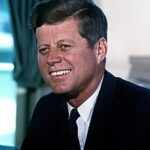Kennedy’s Moon Landing Commitment: The Decision That Changed History
On May 25, 1961, President John F. Kennedy delivered his historic moon landing commitment to Congress. He boldly declared America would land astronauts on the moon before 1970. This audacious goal came during the height of Cold War tensions with the Soviet Union.
The Strategic Context Behind the Decision
The Soviets had shocked America with Sputnik in 1957 and Yuri Gagarin’s spaceflight in April 1961. Kennedy needed a dramatic response to demonstrate American technological capability. The moon landing commitment offered a clear, measurable goal that could galvanize national support. 📊 NASA’s budget increased from $500 million to over $5 billion annually.
Mobilizing National Resources for Space Exploration
The Apollo program became America’s largest peacetime technological endeavor. It employed over 400,000 people across multiple industries and universities. 💰 The total investment reached $25 billion by 1973, equivalent to over $150 billion today. This massive undertaking spurred innovations in computing, materials science, and telecommunications.
Impact:
Transforming American Technology and Industry
Kennedy’s moon landing commitment revolutionized American technological capabilities. The Apollo program generated thousands of innovations that benefited civilian industries. Computer miniaturization, integrated circuits, and advanced materials emerged from space research. 📊 Over 1,800 NASA technologies were eventually commercialized for public use.
International Leadership and Cold War Victory
The successful moon landing in July 1969 demonstrated American technological supremacy globally. 🌍 This achievement shifted international perceptions of American capabilities and leadership. The mission provided powerful propaganda against communist claims of technological superiority. America’s space success influenced allies and neutral nations throughout the Cold War.
Long-term Scientific and Educational Benefits
The moon landing commitment sparked unprecedented interest in science and engineering education. University enrollment in STEM fields increased dramatically throughout the 1960s. The program established America as the world leader in space exploration for decades. 🔥 Scientific discoveries from lunar samples advanced geology, astronomy, and planetary science. The Apollo legacy continues inspiring new generations of scientists and engineers today.
